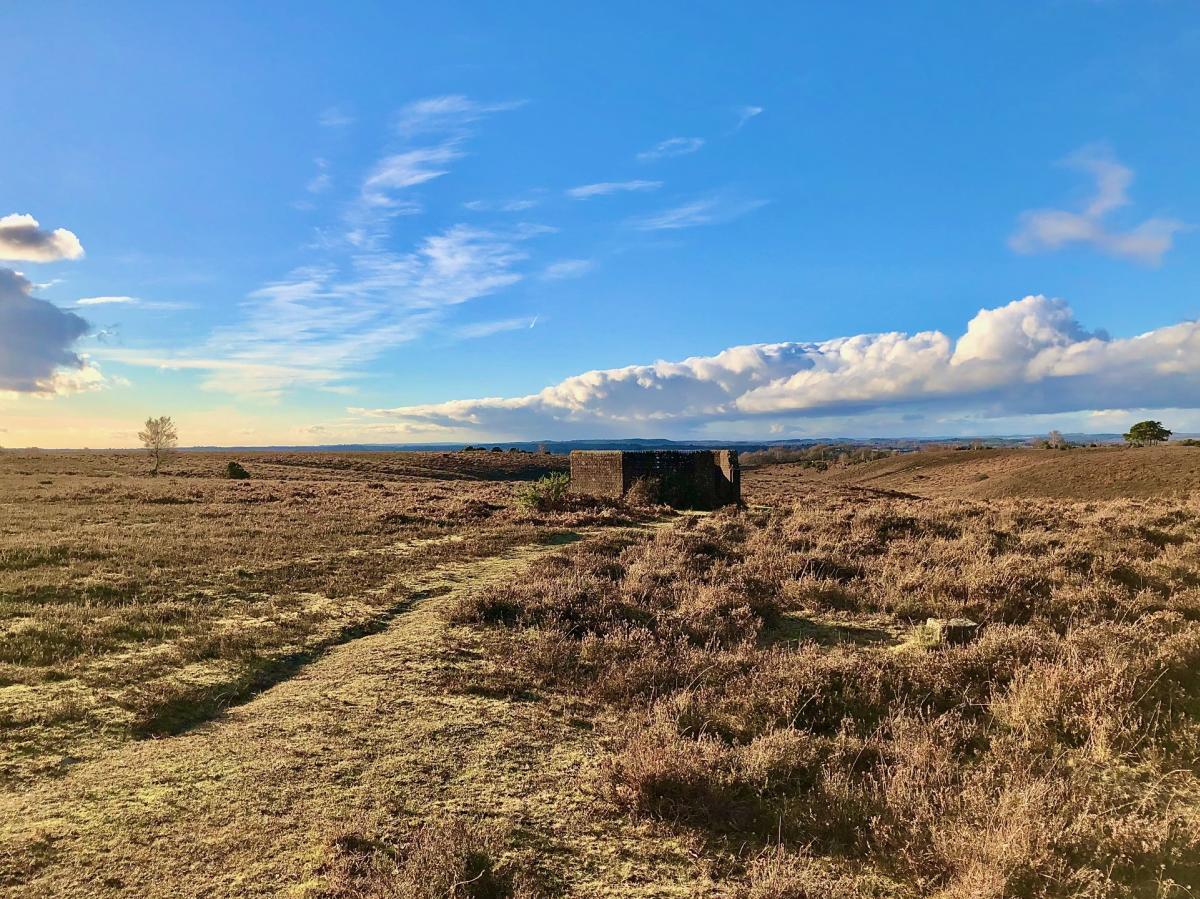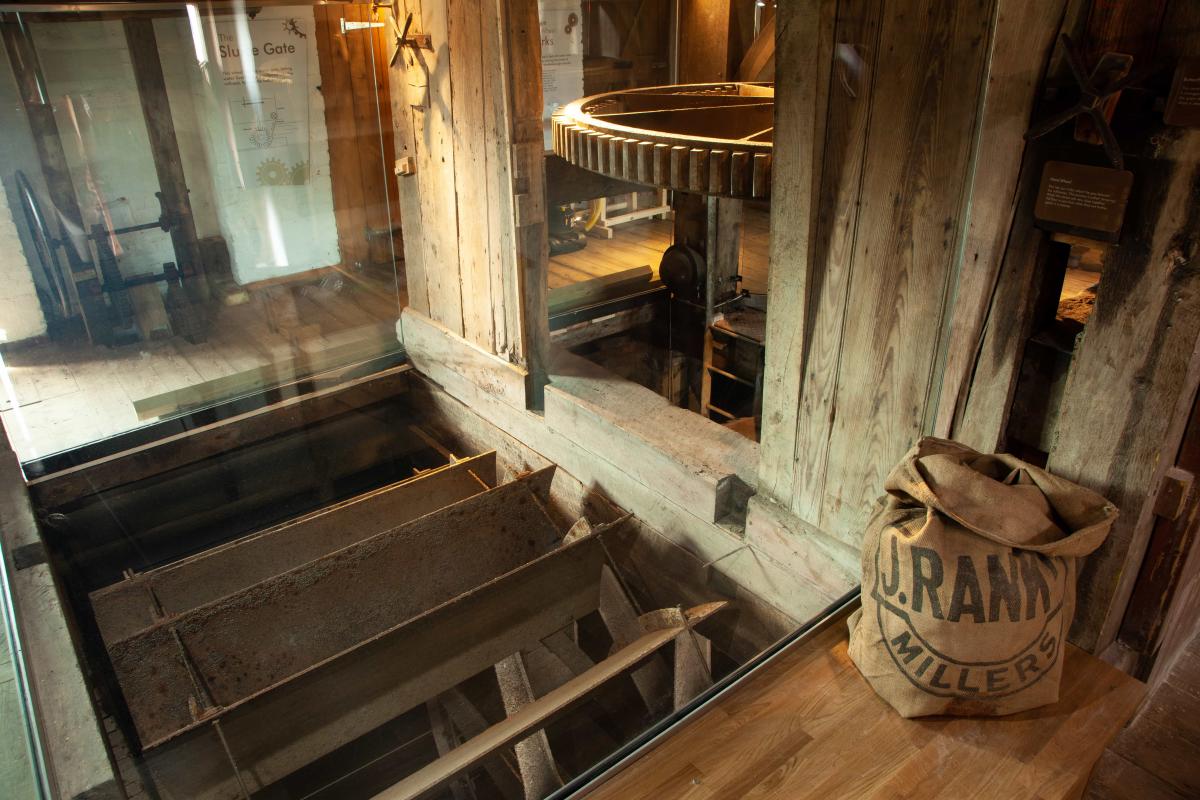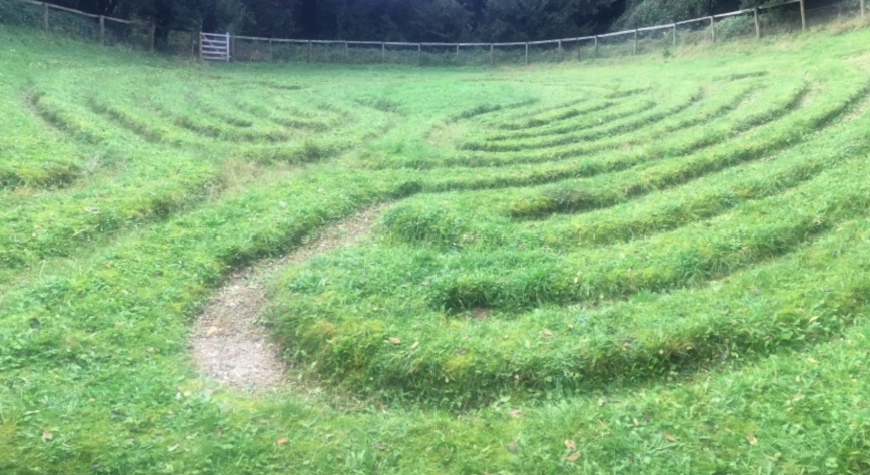The magical New Forest has so many world-class attractions and amazing places to visit that it’s easy to overlook the other side of this beautiful area – our hidden gems and secret spots.
They are the places that only the locals know; the sights and spectacles you’ve maybe never heard of, or the lesser-known parts of some of our best-known attractions.
As the saying goes…if you know, you know. So here we go!
The Huff Duff. The National Trust’s Ibsley Common walk includes this delightful little gem whose name comes from its original purpose, as a High Frequency Direction Finding station HF/DF. The original structure had a rotating aerial mounted on a tower and together with other Huff Duffs, were used to plot enemy or Allied manoeuvres during the Second World War. Sadly, you can’t see the building anymore (although the New Forest National Park Authority’s site has a CGI of what it would have looked like) but there is a fascinating military bunker nearby as a reminder of war-time days. There are also 360 panoramic views of the New Forest and it’s a great place to watch the sun rise or set.
 Image - The Huff Duff
Image - The Huff Duff

The New Forest ponies’ favourite beach. There’s no parking and nowhere to turn a car at Tanner’s Lane, which means you’ll have to approach the New Forest ponies’ beach of choice the way they do – on foot. (But you can cycle, too!) It’s a bit of a way down and when you get there, the beach is minuscule. However, if you’ve timed it right, the foreshore – a tiny scrap of sand - will be visible and you’ll enjoy an amazing, natural beach. If you’re super lucky, you may be able to witness the ponies enjoying a paddle, too.
The Bisterne Dragon Sculpture. Many New Forest visitors know that Bolton’s Bench near Lyndhurst is supposedly the place where Sir Maurice de Berkeley died after slaying an evil dragon, which was alleged to terrorise the local population. Most will not know that if they set off on the walk round Pondhead Inclosure near Matley Ridge, the Bisterne Dragon lives on – in a giant sculpture in wood.

Image - The Bisterne Dragon
The secret graveyard. Visit the church of St Nicholas at Brockenhurst and you’ll find that along with the late locals, there is a sizeable Commonwealth War Graves section in its churchyard. The 106 white monuments mark the resting place of 93 New Zealand combatants, who were nursed at The New Zealand Hospital in the village of Brockenhurst which was designated as a hospital centre. In addition to the New Zealand graves, three Indian and three unidentified Belgian civilians are commemorated, and the east side of the New Zealand plot is home to a larger memorial incorporating a Cross.
Britain’s only working tide mill. Overlooking Southampton Water on the Forest’s tranquil eastern edge, Eling has had a working tide mill on this site for more than 900 years. After being restored between 1975 and 1980 it reopened and now there is a museum, which explains and interprets this fascinating part of our industrial heritage and you can even buy their flour. Because of the changing tides, Eling Tide Mill only grinds flour at certain times, so make sure you don’t miss them by checking their website before any visit.


Image - Eling Tide Mill 
A red stream. Yes, it’s true, the Iron Well near Fritham really does run a red colour. It’s alternative name, Chalybeate, explains it better as the word means: ‘a natural spring with iron salts’ which appear a dull red. Also known as Leper’s Well, the waters were said to cure the distressing disease. More recently it was believed they could cure dogs of the mange, but we wouldn’t recommend dunking your pet or sampling the well water itself!
The Chapel of Saint Mary. Next to the Master Builder’s House Hotel at picturesque Buckler’s Hard is what must be one of the UK’s tiniest churches. The chapel of St Mary is actually based in the front room of one of the Georgian cottages at the historic port, and still serves as a place of worship. After the First World War, the chapel was restored, thanks to the efforts of Lady Poole, and the ashes of her husband; Sir Reginald Poole, reside there. It’s also the home of a memorial to the first round-the-world sailor, Sir Francis Chichester, who set forth on his epic voyage in Gypsy Moth IV from Buckler’s Hard in 1966.


Image - The Chapel of Saint Mary
An ancient courthouse. With its magnificent wooden seating, hand-painted heraldry and mounted stag’s heads, the Court of the Verderers, in the Queen’s House building at the top of Lyndhurst High Street, is a splendid enough site. However, if you look up sitting dates you can see the Verderers – the people charged with running the ancient system established by the New Forest’s founder, William the Conqueror – at work. For court dates, see verderers.org.uk
The Miz Maze. High on a hill near Breamore House at Fordingbridge, you’ll find a mysterious maze cut into the chalk downland. Understood to be of Cretan design, the maze has no dead ends but resembles a labyrinth, where all paths will eventually bring you to the little mound in the centre. It’s claimed the ancient marking was used by Druids and on Pagan holy days, and also by penitent monks, who completed the maze journey – rather painfully – on their knees. You won’t need to do this, but to find it, you’ll have to be prepared for a walk – there is no easy car access, just a number of paths, one of which leads from nearby Breamore House.


Image - The Miz Maze 
Museum of the vanished airfields. The New Forest played an enormous part in both World Wars, with bombing ranges, targets, spy schools and even a Dog Training Unit at Matley, near Lyndhurst. Most of the structures from these times have been removed, but there is a fascinating Heritage Centre run by the Friends of the New Forest Airfields (FONFA) near Bransgore. The heritage centre will help you discover where the old airfields were, and how they operated and gives details of the New Forest’s impressive Air Fields Memorial near Bransgore.


